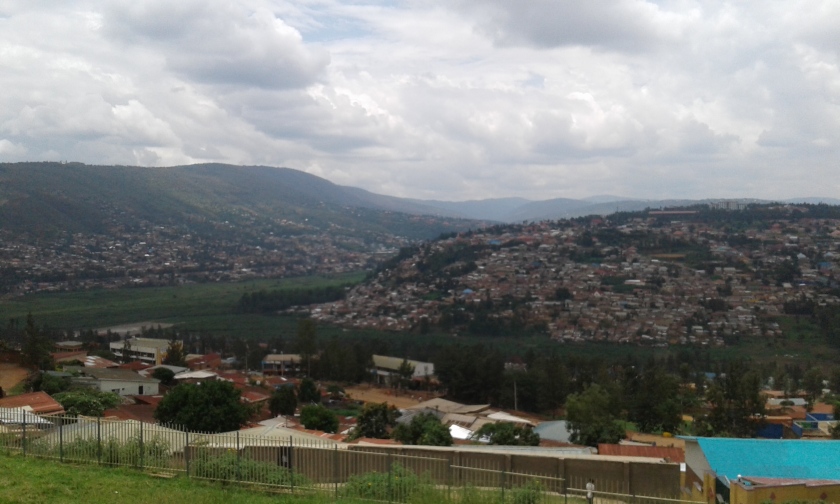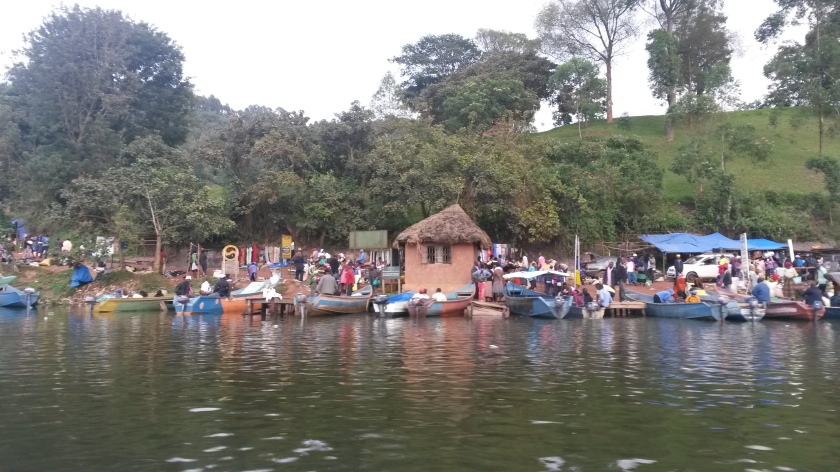
To get to Lake Bunyonyi in the mountainous far southwest corner of Uganda via public transport, I could either take a night bus that arrived in the nearby city of Kabale at 4am (missing seeing the countryside along the way, as well as risking the danger of night busing in East Africa) or take a matatu (minibus) to Mbarara and then catch the next vehicle heading toward Kabale. I chose the latter (despite the additional safety concern of riding a matatu) and hopped on a little before 9am. After waiting for an hour for the car to fill with passengers (typical), the driver pulled around and told everyone to switch into the next matatu because of a mechanical issue. The attendants filled the new car’s tires with air and we were off, only to pull over at a gas station about 15 kilometers outside of Fort Portal with yet another mechanical issue. I was becoming increasingly frustrated, and based on my previous experience with the bus to Fort Portal I decided to catch a ride back to town, bite the bullet and pay for a car and driver to take me directly to Bunyonyi.
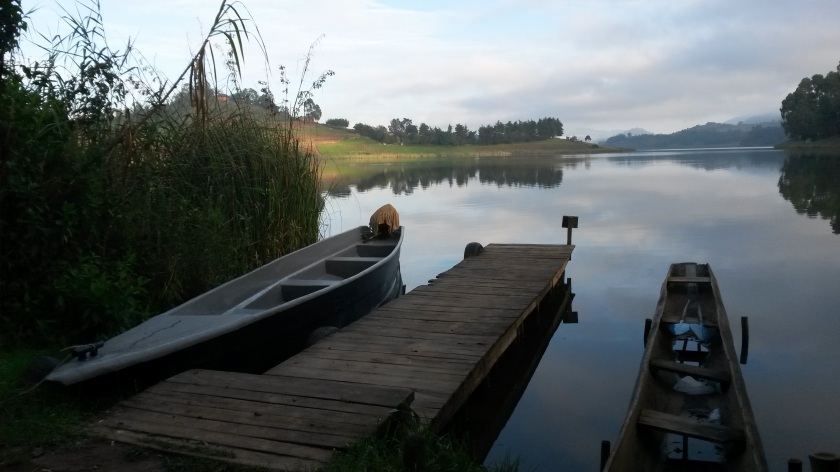
It was a beautiful drive, passing through the lowlands of Queen Elizabeth National Park (unintended safari #2!) and making a brief stop to take a photo at the equator. A dirt road led us up from Kabale to the shores of Lake Bunyonyi, a large freshwater lake at about the same altitude as Lake Tahoe (6,300 feet, it felt like home!) and filled with almost 30 hilly islands of various sizes, many of them inhabited and terraced for farming. As the weather was looking questionable I took a motorboat out to Itambira Island hoping to find lodging in one of their open-air geodomes, but had to settle for a bunk in a dorm room by the water. I immediately jumped into the lake, its cool waters feeling incredibly refreshing after sweating my way through most of East Africa. At night I enjoyed a clear view of the stars and wished I had time to stay longer and just relax, after all of the adventures with getting to the place. I did have the chance to hike around the island the next morning before paddling back to the mainland in a dugout canoe.
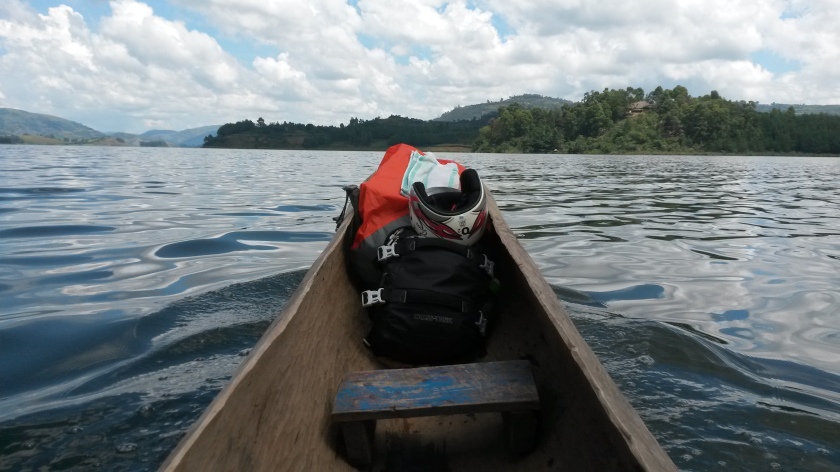
From the shore I arranged a boda-boda to take me to the Rwandan border, about 25 kilometers away. Rwanda was not in my original plan but since I was able to obtain an East Africa Tourist Visa, I figured I should take advantage of the opportunity and spend a few days in the capital, Kigali. With its downtown built at the crest of one of the city’s many hills, Kigali resembled Kampala in some respects. However in others it differed wildly, one distinction being the requirement that boda drivers give their passengers helmets to use while riding (an offer I was more than happy to take advantage of). Traffic was a little less chaotic, and the city also seemed a little less lively. But people were friendly, and though I don’t speak French or the national language, Kinyarwanda, I felt welcome.
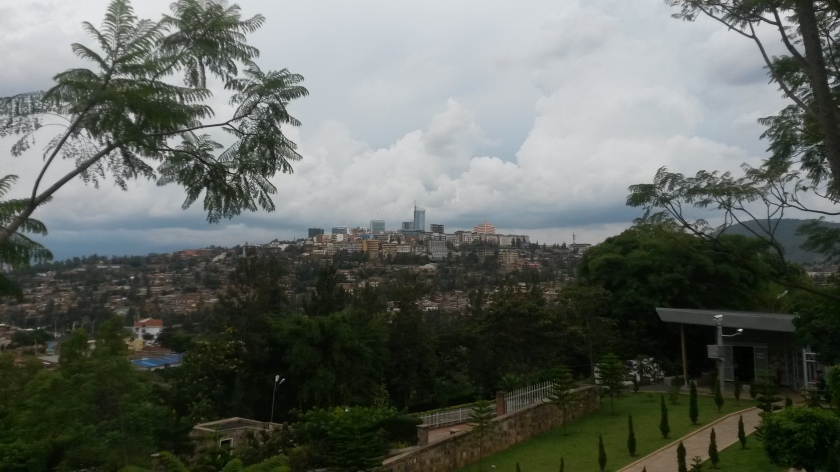
I visited the “first house built in Uganda”, that of German explorer Richard Kandt, which now houses the small Museum of Natural History. Here I learned that the true source of the Nile River is in Rwanda (sorry Uganda) and other interesting facts about the country’s geology and biodiversity. Out back was a large shed that housed a collection of live snakes, including my favorite as a kid, the black mamba! (unfortunately photos were not allowed inside).
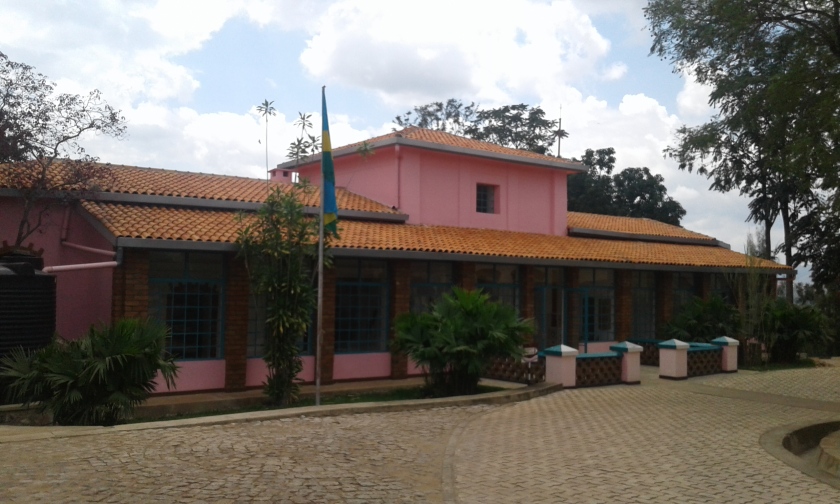
I spent my first full day visiting a couple of memorial sites from the 1994 genocide. With the city seemingly empty on a Sunday morning, I first visited the bullet hole-ridden building at Camp Kigali where 10 Belgian peacekeepers were killed in a (successful) attempt to have Belgium withdraw its contingent at the start of the massacres. The guide had survived the genocide as a teenager and showed me a bullet wound in his leg and machete scar on his stomach. This really reinforced the fact that this is not ancient history (I visited the Killing Fields in Cambodia while traveling around Asia in 2009, which happened over 35 years previously and long before I was born. Rwanda was only 23 years ago; I was 7 years old).
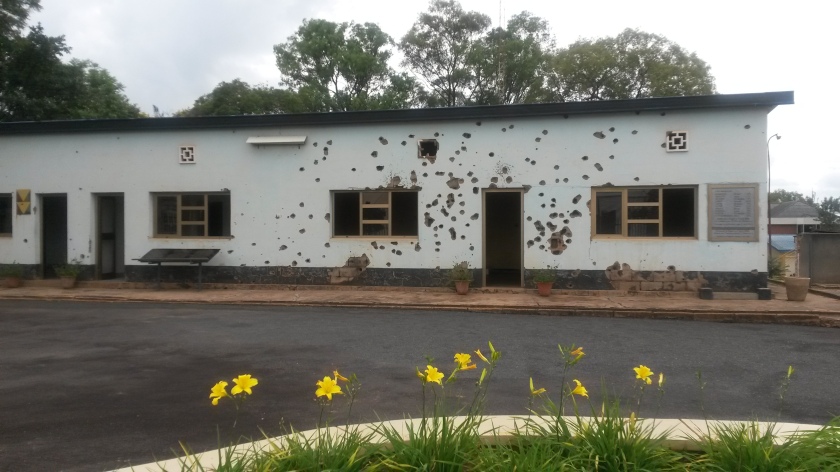
At the Genocide Memorial itself, I watched an introductory video containing powerful testimonies of survivors; powerful not so much in the listing of how many of their family members were killed, but in that the killers were friends and neighbors, people they had grown up with (one woman said, “It is difficult to trust anyone anymore.” Another survivor: “It changes you. You can never go back”). I had a visceral reaction when reading about the atrocities that happened in homes, in churches where people tried to take shelter, on the streets. A room lined with photos of victims (placed there by family members) was haunting, but even more haunting was a room full of skulls and femurs of some of the victims. Outside were a large number of concrete mass graves – I thought there were only two levels, but kept finding more of them (gave a sense of the depressing scale of the tragedy, 250,000 people buried at the memorial alone). Walking through the gardens and greenery provided a much needed respite and space to reflect on what happened, what is happening in the world now and perspective on my own life.
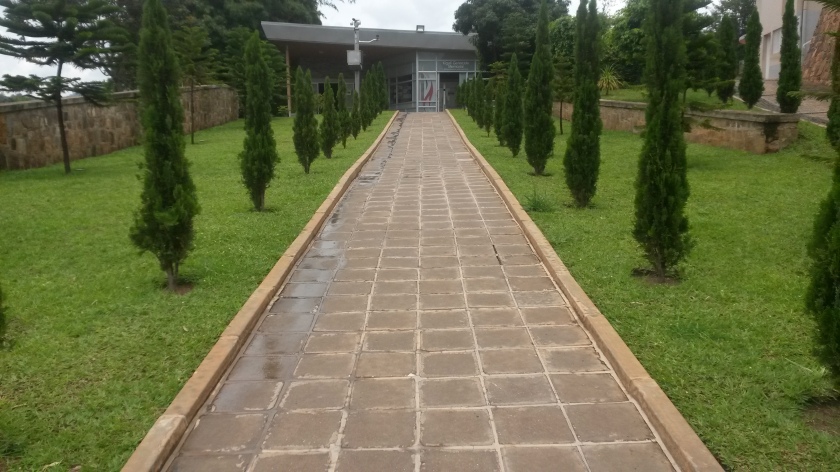
I found in interesting that, according to the museum, Hutu and Tutsi (during the genocide, members of the Hutu majority, especially the Interahamwe militia with the support of the interim government, targeted the Tutsi minority) were originally economic distinctions across all of the 18 tribes in Rwanda. It was only during the colonial period that these identities were made more concrete, being included on citizens’ identity cards and used to control the population by the colonial government. There is much more that I can say about this experience and my reflections, but I will leave it here for now. Rwanda has come a long way since that dark time and I would love to return one day to visit the countryside, the volcanoes, and meet more of the wonderful people.
